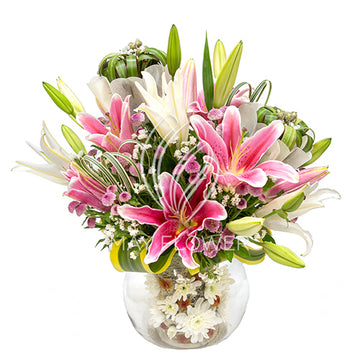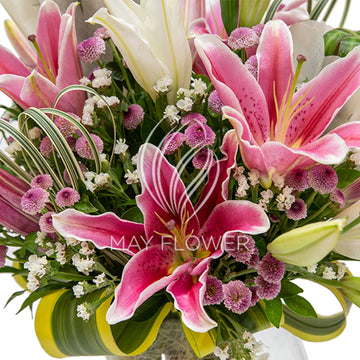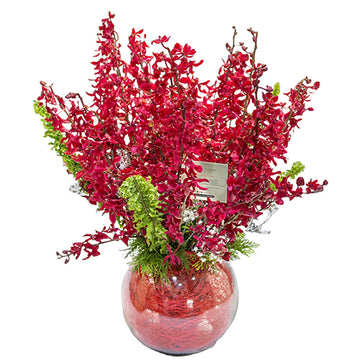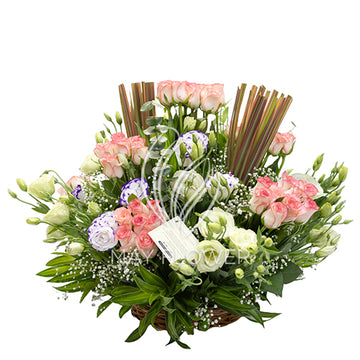A flower has bloomed in space for the first time ever, aboard the International Space Station. On Saturday, American astronaut Scott Kelly tweeted a photograph of a zinnia flower that had blossomed in the space laboratory. Kelly has been working there since March 2015 and has become the resident gardener on board.
This accomplishment brings space explorers a step closer to growing fresh produce in space during longer missions, which NASA hopes to do in 2018. In addition, the flowering experiment called “Veggie” will allow scientists to understand how plants grow in microgravity. Astronauts started experimenting with Veggie in 2014, when they attempted to grow red romaine lettuce in the same system in which the zinnia flower was grown.
Kelly, the space station’s commander, had good reason to crow. Just a few weeks earlier, the zinnias, which are part of the NASA plant growth experiment “Veggie,” had come close to dying due to a break out of mold. If it was not for a revised care plan by NASA botanists on the ground — and Kelly’s own “green thumb” on orbit — there may not have been any flowers to tweet about.
But in conveying his excitement, Kelly made a mistake. His newly-bloomed zinnias were not the first flowers grown in space.
Rooting through history
Four years ago, astronaut Don Pettit took it upon himself to grow a few different types of plants on board the station in what NASA labeled as a “personal biology experiment.” Lacking the sophisticated growth chamber that would later launch as part of the Veggie study, Pettit used plastic bags as his pots.
In addition to growing zucchini and broccoli sprouts, Pettit also successfully cultivated a sunflower to blossom — and beyond.
“Sunflower is going to seed!” Pettit wrote in his blog, “Diary of a Space Zucchini,” in June 2012. “His blossom is wilted-brown and has a few lopsided packed seeds. This is not quite normal, but then we are living on a frontier and things are different here.”
Ultimately NASA is hoping that astronauts can supplement their menus with freshly-grown greens, especially on future deep space missions to destinations beyond the Earth, like Mars. Growing plants also offer psychological benefits, and they can assist in atmosphere recycling.
“The farther and longer that humans go away from Earth, the greater the need to be able to grow plants,” said Gioia Massa, science lead for Veggie at NASA. “I think that plant systems will become important components of any long-duration exploration scenario.”
The zinnias, which are in fact edible (but were not eaten), were intended by NASA as a test run for growing tomato plants on the space station in 2017.By then, Kelly will be long back home on the Earth. He and cosmonaut Mikhail Kornienko are set to complete a nearly yearlong stay on the station in March. As such, the zinnia flowers and previous lettuce offered more than sustenance for the stomach, but satisfaction for the mind.
This flowering crop experiment began on Nov. 16, 2015, when NASA astronaut Kjell Lindgren activated the Veggie system and its rooting “pillows” containing zinnia seeds. The challenging process of growing the zinnias provided an exceptional opportunity for scientists back on Earth to better understand how plants grow in microgravity, and for astronauts to practice doing what they’ll be tasked with on a deep space mission: autonomous gardening. In late December, Kelly found that the plants “weren’t looking too good,” and told the ground team, “You know, I think if we’re going to Mars, and we were growing stuff, we would be responsible for deciding when the stuff needed water. Kind of like in my backyard, I look at it and say ‘Oh, maybe I should water the grass today.’ I think this is how this should be handled.”
Excess humidity in the flower garden soon led to mold growing on the leaves, and so a fan was brought in to help dry them out.
However, the fans worked a little too well and soon several of the plants showed signs of dehydration – and two of them eventually died off over the New Year.
The remaining plants continued to flourish, however, and by January 8 were showing signs of new growth and buds, which eventually turned into flowers.
The flowers appear very similar to those grown on earth, except for the curled edges of the petals, which could be down to the zero-gravity conditions.
Alexandra Whitmire, deputy element scientist for NASA’s Human Research Program, said: Plants can indeed enhance long duration missions in isolated, confined and extreme environments – environments that are artificial and deprived of nature.
Kelly, who took over garden duties after NASA astronaut Kjell Lindgren returned to Earth on Dec. 18, cut away the affected, moldy plant tissue. The plant surfaces and plant pillow surfaces were sanitized with cleaning wipes, and the fans continued at a high speed in hopes of keeping the Veggie chamber dried out and mold growth abated.
By Christmas Eve, though, Kelly called down to say the high fan speed was drying out the crop too much. But the next scheduled watering was not until Dec. 27.
“I think that would be too late,” Kelly told the ground team. “You know, I think if we’re going to Mars, and we were growing stuff, we would be responsible for deciding when the stuff needed water. Kind of like in my backyard, I look at it and say ‘Oh, maybe I should water the grass today.’ I think this is how this should be handled.”
The team on the ground gave Kelly the green light to take on the role of autonomous gardener.
“This is perfect – he has the helm,” Smith said. “We turned over care to Scott. He’s seen the lettuce, he’s got all the tools he needs, so we just provided him quick guidelines to understand the zinnias.”
Two of the plants that displayed stress died off but two remaining plants have continued to thrive with petals in January even beginning to sprout buds.
“Some of my space flowers are on the rebound! No longer looking sad!” Kelly tweeted on Jan. 8.
The flowers weren’t expected to bloom for another seven to 10 days. But it seems they couldn’t wait to add a little color to the space station.


























